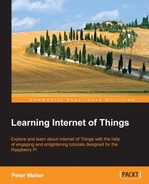It is quickly realized that building a protocol gateway by implementing translation pairs between protocols directly is very inefficient and difficult to maintain. A more fruitful path is to use a common abstraction model suitable for IoT and the translation of operations between different protocols. If such an abstraction model is used, translation pairs only need to translate between a given protocol and the abstraction model. This method is more efficient when it comes to implementation and quality assurance than direct translation if more than three different protocols are supported. While translating between two different protocols, you simply need to translate to the common abstraction model first and then use the second translation pair to translate from the abstraction model to the corresponding protocol.
Apart from shortening the development time drastically, a good abstraction model also helps in other ways. It can be used by internal services and administrative processes to administer and communicate with devices regardless of the protocol being used underneath. The CoapGateway project uses the abstraction model provided by the Clayster platform, which was introduced in the previous chapter. As such, it can be used to bridge the CoAP protocol with any other protocol hosted by the platform. Since the ClaysterSmall distribution already has support for XMPP through the Clayster.Metering.Xmpp module and MQTT through the Clayster.Metering.Mqtt module, our new CoapGateway project can be used to bridge the CoAP, XMPP, and MQTT protocols. This can be seen in the following diagram:

Protocol translation pairs grow as O(N) using an intermediary abstraction model
Note
What is a good abstraction model? The challenging part is to create an abstraction model that is not too concrete. A concrete model might allow you to unknowingly paint yourself into a corner from where you would not be able to move later. This happens when you realize that you need to do something you've never done before, something that is not supported because the model is not sufficiently general. Another challenge is of course to avoid over-abstracting the model, which would make it difficult to use.
Abstraction models will be the point where IoT platforms will distinguish themselves over time. Which platform allows developers to do more over time, taking into consideration that it is not known today what will be developed in the future? Who can provide the most fruitful abstraction model for IoT?
The Clayster IoT platform is based on 20 years of experience in the fields of M2M and IoT; hence, its abstraction model has evolved over time and is easy to use, powerful, and supports a wide range of different use cases. By studying its abstraction model, you are better equipped to determine which platforms suits your long-term requirements.
